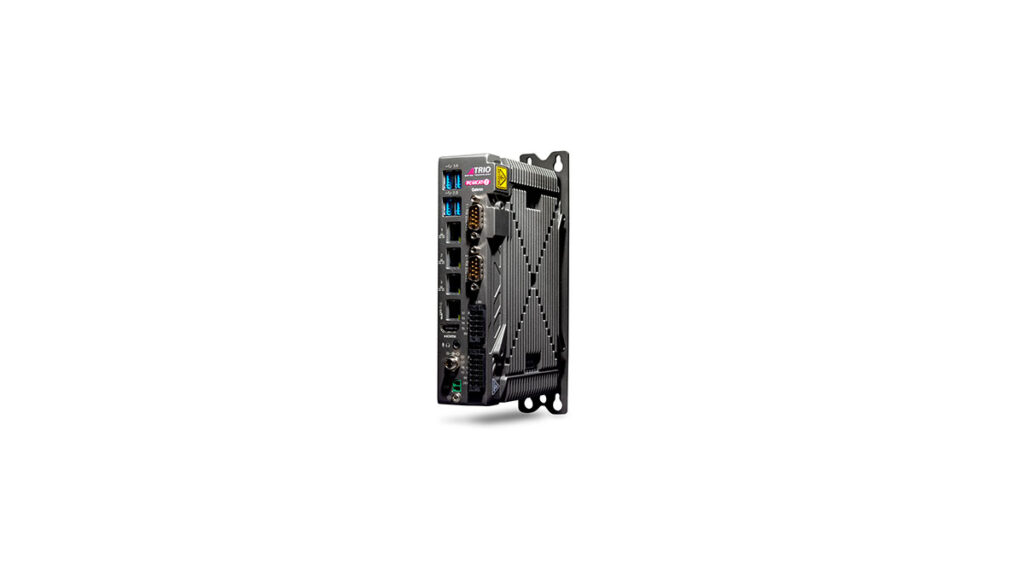Trio Motion Technology has unveiled a novel motion controller, the PC-MCAT-2, at SPS. This controller integrates Intel multi-core processors and runs Microsoft Windows alongside Trio’s Advanced Motion-iX core, offering OEM machine builders a unified control solution that seamlessly merges Windows applications with advanced motion capabilities.
Rooted in Trio’s Motion First Automation strategy, the PC-MCAT-2 prioritises motion control. This approach, which has proven successful in various industrial machines, places emphasis on the primary factor for machine efficiency and output.
The PC-MCAT-2, driven by an Intel processor, merges Windows programming language support with Trio’s acclaimed motion control. It offers a platform for software integration and high-speed EtherCAT coordination for up to 64 servo and robot axes.
The controller enhances machine control and IoT integration. It operates on Microsoft Windows 10, offering four processor options ranging from Celeron to Core i7, and up to 256GB solid-state drive memory. The PC-MCAT-2 can control a wide range of peripheral devices, including camera vision systems and sensors, through its comprehensive communication port array, which includes HDMI, USB, serial ports, and general-purpose digital I/O.
Additionally, the controller facilitates IoT connectivity, linking machines to broader factory networks via three Ethernet ports, each with a distinct IP address for improved network segmentation and bandwidth.
The PC-MCAT-2 supports flexible programming through an API library for Windows applications, communicating with Trio’s Motion-iX core via a shared memory interface. This offers a high-speed link to the motion engine and allows the integration of third-party SDKs for advanced machine control from a single application.
In terms of motion performance, the PC-MCAT-2 can coordinate up to 64 servo or robot axes with Trio’s recognised speed and precision, featuring EtherCAT cycle times as low as 125μs, 64-bit maths precision, and a motion command execution benchmark of up to 500 lines/ms.
For optimal motion performance, applications can be written in Trio’s original programming language, TrioBASIC, or IEC61131 languages with PLCopen, executing independently of Windows.
The integration of Windows-based machine control and motion coordination within a single device optimises performance by eliminating delays associated with separate PC connections. This integration also speeds up OEM development time and reduces both machine footprint and hardware costs.
From an end-user perspective, the single-controller approach enhances reliability, mitigates communication issues post-commissioning, and is housed in a rugged metal casing for improved heat dissipation and a fanless design for noise reduction and maintenance ease.
Tom Alexander, President of Trio Motion Technology, highlights the PC-MCAT-2 as a significant advantage for machine builders needing to deploy Windows-based control applications and establish IoT connectivity, alongside high-performance servo or robotic motion control. Coupled with Trio’s range of controllers, servo drives, motors, I/O, HMI, and SCARA robots, the PC-MCAT-2 offers a comprehensive automation solution with support from a single vendor.
There’s plenty of other editorial on our sister site, Electronic Specifier! Or you can always join in the conversation by commenting below or visiting our LinkedIn page.
